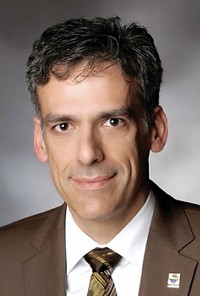Advertisement
Grab your lab coat. Let's get started
Welcome!
Welcome!
Create an account below to get 6 C&EN articles per month, receive newsletters and more - all free.
It seems this is your first time logging in online. Please enter the following information to continue.
As an ACS member you automatically get access to this site. All we need is few more details to create your reading experience.
Not you? Sign in with a different account.
Not you? Sign in with a different account.
ERROR 1
ERROR 1
ERROR 2
ERROR 2
ERROR 2
ERROR 2
ERROR 2
Password and Confirm password must match.
If you have an ACS member number, please enter it here so we can link this account to your membership. (optional)
ERROR 2
ACS values your privacy. By submitting your information, you are gaining access to C&EN and subscribing to our weekly newsletter. We use the information you provide to make your reading experience better, and we will never sell your data to third party members.
Policy
Innovation
by Rudy M. Baum
December 7, 2009
| A version of this story appeared in
Volume 87, Issue 49
We take it as a given that innovation is good. We also take for granted that the U.S. has always had a knack for being innovative, and that that knack is an important factor in the remarkable prosperity this nation has long enjoyed.
But what is innovation exactly? Why has the U.S. been good at it? Is the U.S. losing its innovative bent, at least relative to up-and-coming nations such as China? How does a country foster its innovative capacity?
These were some of the questions addressed at the two-day "Innovation Economy Conference" held last week in Washington, D.C. The conference was sponsored by the Aspen Institute, Intel, Democracy, and "The News Hour with Jim Lehrer." The program featured industry leaders such as Intel President and CEO Paul S. Otellini and GE Chairman Jeffrey R. Immelt, government officials such as Education Secretary Arne Duncan, academic leaders such as Rensselaer Polytechnic Institute President Shirley Ann Jackson, and thought leaders such as Aspen Institute President and CEO Walter Isaacson. Panels during the conference were moderated by "News Hour" correspondents.
One panel during the conference that should be of particular interest to C&EN readers focused on "Are We Doing Enough To Support Science in America?" and featured ACS Executive Director and CEO Madeleine Jacobs, NIH Director Francis S. Collins, and Columbia University physics professor Brian Greene, who is also the founder of the World Science Festival.
It would be impossible for me to summarize in two columns the rich and diverse conversations that occurred during the conference's panels. A lot was said about science and mathematics education in the U.S. Duncan, for example, said that "we have lost our way in education. We used to lead the world in college education, and we've fallen to 10th or 11th." He bluntly stated that the best math and science teachers should be paid more than other teachers, observing that "some jobs are frankly tougher than others because of the subject matter and the locale."
During the discussion on support of science, Jacobs observed that "science is critical to a strong U.S. economy. Making predictable and sustainable investments in basic research will help our economy recover, grow, and stay strong by planting the seeds of future industries and jobs. Those investments will also pay dividends in terms of addressing major scientific challenges such as energy independence facing the U.S. and the world."
Collins noted that "the structure behind science funding in the U.S. is not in bad shape. Our university system is still the envy of the world. The overall level of support of research is insufficient." Collins and others noted that President Obama's stated goal of increasing national support of R&D to a level equivalent to 3% of U.S. gross domestic product, if sustained, would be a boon.
During another panel discussion, Sophie Vandebroek, the chief technology officer at Xerox and president of Xerox Innovation Group, explicitly equated innovation with invention plus entrepreneurship, an equation that was suggested numerous times during the conference. Innovation involves products that solve problems and the sales and marketing ability to inform consumers of the existence of those products.
Interestingly, in a story in this issue on Dow Chemical's transformation (see page 25), Dow Chief Technology Officer William F. Banholzer makes much the same point rather more bluntly: "While invention might be where the Nobel Prize is created, innovation is where the money is."
A consensus that emerged during the meeting, it seemed to me, is that the U.S. is not floundering when it comes to innovation, but that it could do better and government has a role to play in fostering innovation. A big part of that role is working to improve the nation's educational system. Another is supporting the scientific infrastructure. And still another is to act in some sense as a broker that facilitates the interaction between inventors and entrepreneurs that is required for innovation to take place.
All the sessions during the conference were taped and can be viewed on Aspen Institute's website, aspeninstitute.org.
Thanks for reading.
Rudy Baum
Editor-in-chief
Views expressed on this page are those of the author and not necessarily those of ACS.



Join the conversation
Contact the reporter
Submit a Letter to the Editor for publication
Engage with us on Twitter